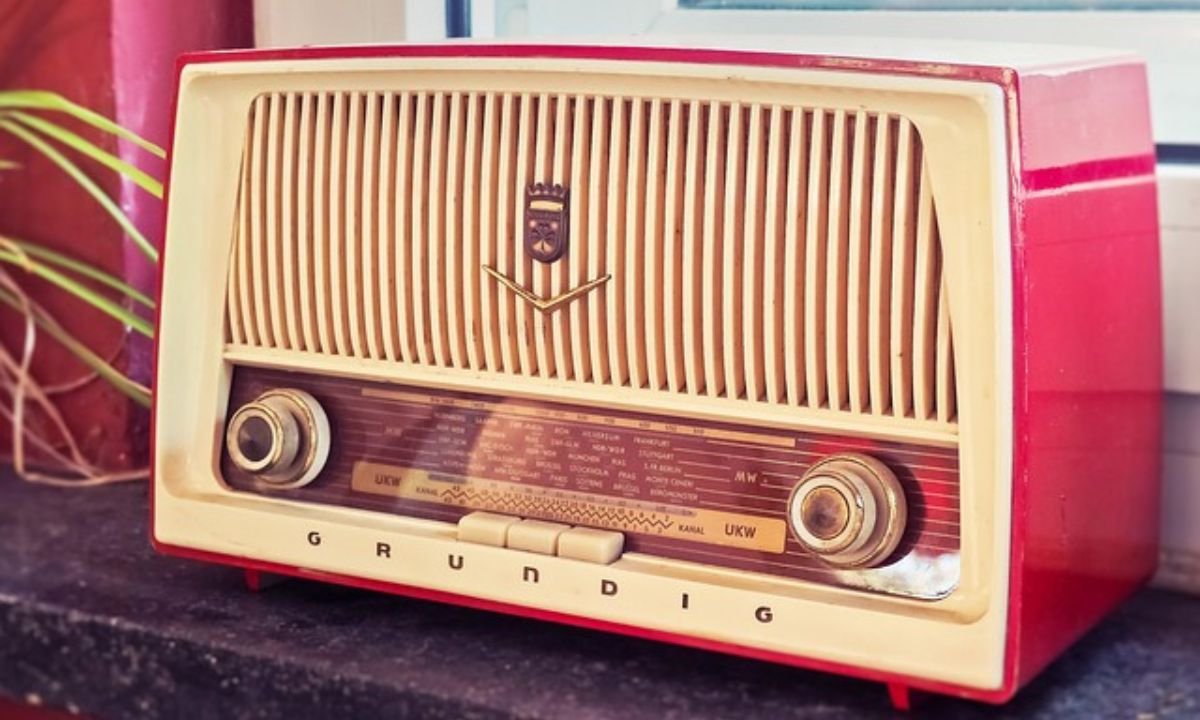When a concrete pour starts in the middle of a Monterrey jobsite—or a truck in a Mexico City fleet misses a turn—you don’t have time to fumble with apps or hope for cell coverage. You need instant, reliable push-to-talk. That’s the promise of professional radiocommunication: clear voice, zero dial-in friction, and the confidence that your team is connected when it matters most.
In this guide, we’ll demystify the radio landscape so you can choose the right gear with zero guesswork. We’ll explain the main radio types, when to add a repeater, which features matter for your environment, and the accessories that turn a good setup into a great one. And because you’re shopping in Mexico, we’ll keep scenarios and tips practical for local industries—from logistics and construction to security, marine, and aviation. Throughout, think of RadioRed as your trusted partner: expert guidance, top brands (Kenwood, ICOM, Motorola), and a full range of accessories and services to keep you on the air.
The Essential Types of Radios: Finding Your Perfect Match
At a high level, most professional radios fall into five buckets. Think of them like tools in a toolkit—each optimized for where and how you work.
| Type | Think of it as… | Best for | Why it shines |
|---|---|---|---|
| Portable Radios (Handhelds) | Your “smartphone” for instant voice | On-foot teams: security, events, retail, hospitality, construction | Go-anywhere form factor, rugged, simple PTT, all-day batteries |
| Mobile Radios (Vehicle-Mounted) | A “car stereo” for command and coverage | Fleets: logistics, transport, utilities, public safety | Higher power, louder audio, external antennas for range |
| Marine Radios | A “nautical lifeline” | Ports, fishing fleets, oil & gas offshore, marinas | Built for water, emergency calling, weather awareness |
| Aviation Radios | “Airband specialists” | Aeroclubs, maintenance, ground ops | Designed for aviation comms and clear ATC coordination |
| Intrinsically Safe (IS) Radios | “Spark-safe” tools | Oil & gas, mining, chemical plants, grain silos | Engineered to prevent ignition in hazardous atmospheres |
RadioRed curates each category with proven models and accessories—so whether you need a handful of handhelds for a hotel or a mixed fleet with mobiles, portables, and a repeater, you can assemble a coherent, reliable system.
Portable Radios: The Go-Anywhere Solution
Who they’re for: Security teams patrolling a mall in Guadalajara, crew chiefs on a Puebla construction site, event coordinators at a stadium in CDMX, or hospitality staff across a resort in Cancún.
Why people love them:
- Rugged and ready: Dust, splashes, drops—job sites and venues are tough. Look for MIL-STD and IP ratings.
- All-day batteries: Swappable packs, fast charging, and battery-saver modes keep you talking from morning briefing to close-out.
- Usability: Big PTT buttons, glove-friendly knobs, and programmable side keys mean less fiddling, more comms.
- Digital options (DMR/NXDN): Clearer audio at range, better privacy, text messaging, and efficient spectrum use.
RadioRed tip: If your team moves between indoor floors and outdoor yards, start with UHF handhelds (generally better through walls); if you work mostly line-of-sight outdoors (farms, wide-open plants), evaluate VHF.
Mobile Radios: Powering Your Fleet
Who they’re for: Logistics and delivery operations, municipal fleets, utilities, public transport, and incident command vehicles.
Why they’re essential:
- Higher transmit power: Vehicle-mounted units typically transmit at greater power than handhelds, pushing your signal farther.
- External antennas: Roof-mounted antennas dramatically improve range and consistency.
- Loud and clear: Bigger speakers and noise-cancelling mics for intelligible audio in a noisy cab.
- Integration: Ignition-sense power, remote heads, GPS for fleet tracking, and seamless pairing with repeaters.
RadioRed tip: Combine mobiles in vehicles with portables for ground crews, all programmed to the same talkgroups. That gives you one coherent network spanning yard, road, and warehouse.
Enhancing Your Communication Range with Repeaters
If handheld-to-handheld coverage is inconsistent, or if your operation spans multiple buildings, hills, or large yards, a repeater is the game-changer.
How it works (in plain language): A repeater listens on one frequency and simultaneously re-transmits your signal on another at higher power—often from an elevated location with a tuned antenna. The result: dramatically expanded coverage and clearer audio at the edges.
When a repeater pays off:
- Large campuses: Manufacturing parks in Querétaro, distribution hubs around Toluca, or university grounds.
- Vertical sites: Hotels and hospitals with many floors; high-rise sites downtown.
- Challenging terrain: Valleys, mixed urban/rural routes, or port facilities with complex steel structures.
- Multiple departments: If you need separate talkgroups (security, maintenance, operations) and wide coverage, a digital repeater + combiner system keeps traffic orderly.
RadioRed tip: Let RadioRed survey your site and model coverage. Antenna choice, coax type, duplexers/filters, and grounding are where expertise turns a “meh” setup into a rock-solid network.
Radios for Specialized Environments: Safety First
Marine Radios
Built for the water: Corrosion-resistant housings, waterproofing, floating designs (on some handhelds), and access to marine calling/distress channels. Essential for ports, fishing fleets, offshore rigs, and marina operations.
Key features to prioritize:
- Waterproof/IP ratings and rugged build
- Emergency and weather features
- Loud audio to cut through engine and wind noise
- GPS (on select models) to speed location in emergencies
Aviation Radios
Purpose-built for the airband: Crisp audio, precise frequency stability, and ergonomics for headsets and gloved operation. Ideal for flight schools, aeroclubs, maintenance hangars, and ground ops.
Key considerations:
- Clear channel stepping and fast recall of favorites
- Headset integration and loud output
- Battery endurance or ship-power options for ground vehicles
Intrinsically Safe (IS) Radios
Safety by design: IS radios are engineered to prevent sparks or high surface temperatures that could ignite flammable gases or dust. They’re mandatory across oil & gas, mining, chemical manufacturing, paint shops, flour mills, and similar environments.
What to look for:
- IS certifications appropriate for your hazard class/zone (discuss your site classification with RadioRed)
- Sealed accessories (batteries, mics) that maintain the IS rating
- Positive tactile controls—you should never have to “look down” to talk in risky areas
RadioRed tip: IS isn’t “nice to have”—it’s part of your safety system. Match the certification to your site profile and don’t mix non-IS accessories on IS radios.
Beyond the Radio: Accessories and Advancements
A dependable system is more than a handset. The right accessories and modern digital features amplify safety, privacy, and productivity.
Must-Have Accessories
- Speaker mics & earpieces: Keep radios on belts, improve clarity, and reduce dropped units. For security and hospitality, discreet acoustic tubes remain a favorite.
- Headsets: Essential for high-noise (fabrication plants, airports). Look for noise-attenuating models.
- Batteries & chargers: Rotate spares, use multi-bays for shift changes, and consider smart chargers that extend battery life.
- Carry options: Holsters, chest packs, and vehicle cradles reduce wear and tear.
- Antennas: Tuning matters; low-profile for vehicles, high-gain for remote sites, tuned lengths for VHF/UHF bands.
Digital vs. Analog—and What It Means for You
- Audio clarity at range: Digital generally stays intelligible longer as you move toward the edge of coverage.
- Talkgroups & capacity: Digital can split channels into time slots (e.g., DMR), effectively doubling capacity.
- Privacy & encryption: Keep sensitive operations off public scanners (within legal parameters).
- Text & telemetry: Send quick texts, status codes, or sensor data over the same network.
- GPS & lone-worker: Location reporting and safety timers protect teams in the field.
RadioRed tip: Many operations start hybrid—maintain analog compatibility for legacy gear while rolling out digital to critical teams. RadioRed can program cross-mode solutions during the transition.
Quick Selector: 7 Questions to Nail Your Choice
- Where do you work? Indoors with many walls (UHF) or open outdoor (consider VHF).
- How big is your footprint? Single building/floor vs. multi-site campus (may need a repeater).
- How noisy is it? Plan for speaker mics or noise-attenuating headsets.
- Shift length? Choose batteries and charging plans for your longest day.
- Any hazardous areas? If yes, shortlist IS-certified radios and sealed accessories.
- Do you need privacy or data? Consider digital (encryption, text, GPS).
- Growth plans? Pick systems that scale—more talkgroups, more vehicles, more sites.
Bring these answers to RadioRed, and you’ll have a short, confident shortlist in minutes.
FAQs:
What are the benefits of using two-way radios for a business?
Immediate, one-to-many communication without dialing or data dependencies. Radios deliver instant coordination, predictable coverage (especially with repeaters), lower ongoing costs than per-user cellular plans, and purpose-built durability. Safety features like emergency buttons, lone-worker alarms, and location also protect your teams.
How do repeaters improve radio communication range?
Repeaters receive your signal and re-broadcast it at higher power—often from a better location (e.g., rooftop, tower) with tuned antennas and filtering. That boosts range, clarity at the edges, and indoor penetration. For multi-department operations, digital repeaters also manage multiple talkgroups efficiently.
What’s the difference between a portable and a mobile radio?
Portables (handhelds) are worn on the person—best for on-foot staff who need flexibility. Mobiles are vehicle-mounted, offer higher power, and pair with external antennas for extended reach. Many fleets deploy both: mobiles for drivers, portables for the crew when they step out.
Which radio is best for marine and boating activities?
Choose marine-rated radios with waterproofing, corrosion resistance, and access to recognized marine calling/distress channels. Prioritize loud audio, emergency functions, and (where available) GPS. RadioRed can help you select fixed-mount units for vessels and handhelds as backups or for dock crews.
What features should I look for in a professional-grade walkie-talkie?
Start with ruggedness (MIL-STD/IP), battery life, and audio clarity. For growing teams, consider digital (DMR/NXDN) with encryption, text, and GPS. Add man-down/lone-worker safety features in higher-risk environments. Don’t forget the ecosystem—headsets, speaker mics, multi-bay chargers, and a programming plan.
Why Buy from RadioRed: Mexico’s Radiocommunication Partner
- Top brands, curated: Kenwood, ICOM, Motorola, and more—tested combinations that just work.
- Design & deployment: From site surveys and frequency planning to repeater placement and antenna tuning.
- Programming & training: Consistent channel plans, clear labelling, user training, and documentation so teams ramp fast.
- Service & scaling: Spares, repairs, firmware updates, and expansion paths as your operation grows.
- Value & promotions: Ask about RadioRed Mexico discounts and fleet packages that bundle radios, accessories, and support.
The Bottom Line
Choosing the right radio isn’t just a purchase—it’s a strategic investment in safety, efficiency, and customer service. Start by mapping your environment (indoor vs. outdoor, footprint size, hazards), pick the right type (portable, mobile, marine, aviation, IS), extend with a repeater if coverage demands it, and round it out with the accessories and digital features that fit your workflow.
When you’re ready, explore the full lineup at RadioRed and speak with their experts for a tailored recommendation—whether you need a half-dozen handhelds for a boutique hotel or a multi-site, repeater-backed network for a national fleet. With the right system in place, your team will stay connected, productive, and safe—every shift, every site, everywhere in Mexico.
YOU MAY ALSO LIKE: The Truth About Movierulz 2024: Why It’s a Risk You Shouldn’t Take

